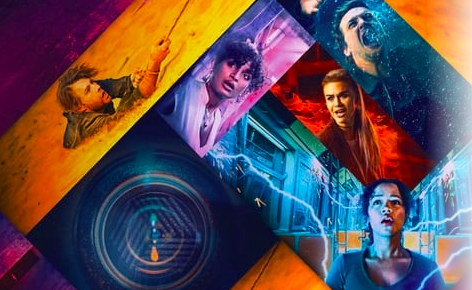Hungarian Classic Corner: The Witness
zita kisgergely
At over half a century old, the Hungarian film A Tanú (The Witness), written and directed by Péter Bacsó, remains at the forefront of daring must-see cinema when it comes to regional classics. The dark comedy, and searingly subversive satire of communist times, holds up and remains relevant to contemporary viewers, as evinced by a 2019 revival at the Cannes Film Festival, in the Cannes Classics section.
Telling the story of a hapless dam-keeper who accidentally becomes involved in one political scheme after another, Wikipedia summarises the film’s plot as such: The film features József Pelikán as a single father who previously participated in the WW2 communist movement of Hungary, but is now working as a dike-reeve. He meets an old friend from the underground communist movement, Zoltán Dániel, now a government official who fishes at the Danube, near the dike. Dániel falls in the river, and Pelikán rescues him and invites him to his home. While the two reminisce old times at Pelikán's home, the ÁVH suddenly appears. They received a "serious anonymous report" stating Pelikán committed an illegal act of slaughtering a pig for food. Dániel tries to save him by demonstrating to the ÁVH thugs how the loyal Pelikán hid him during the purging years before, but he unknowingly reveals the basement, where all the pork had been hidden.
Suppressed for many years — 10 in Hungary before its release — The Witness got its Stateside premier in New York only in 1981. Janet Maslin, the New York Times’ top film reviewer at the time, had this to say: Mr. Bacsó's brand of comedy is as stolid as Pelikan himself. But his jokes are broadly satisfying, and he launches his satirical swipes with a delightful lack of inhibition.
It’s hard to overstate how daring and trenchant The Witness was for its time. Kind of like Orwell writing Animal Farm from within the Soviet Union. For a longer, more in depth treatment of the politics behind The Witness, and its journey from Bacsó’s inception, to its place among international film classics, have a look at the wonderful National Film Institute of Hungary’s site, where the restoration manager wrote a long post on the topic. It was the hard work of the Institute that saw the restored and uncensored version of the film re-released.
Meanwhile, The Witness continues to accrue a cult following abroad, and serve as one of the rare truly hilarious satires of the Socialist era, made within that era. Have a look at the English language subtitled trailer to see what we mean.
Flatpack Films has many years of experience dedicated to offering expert servicing. It has brought the best of Hungary to countless brands, agencies, and production companies through its unique locations, exceptionally skilled crews, top of the line equipment and technical solutions. Backed by an impeccable track record, Flatpack Films has worked with world-class clients including Samsung, Samsonite, Toyota, Braun, Chivas Regal and many more - bringing their projects to life through a highly bespoke approach.












































